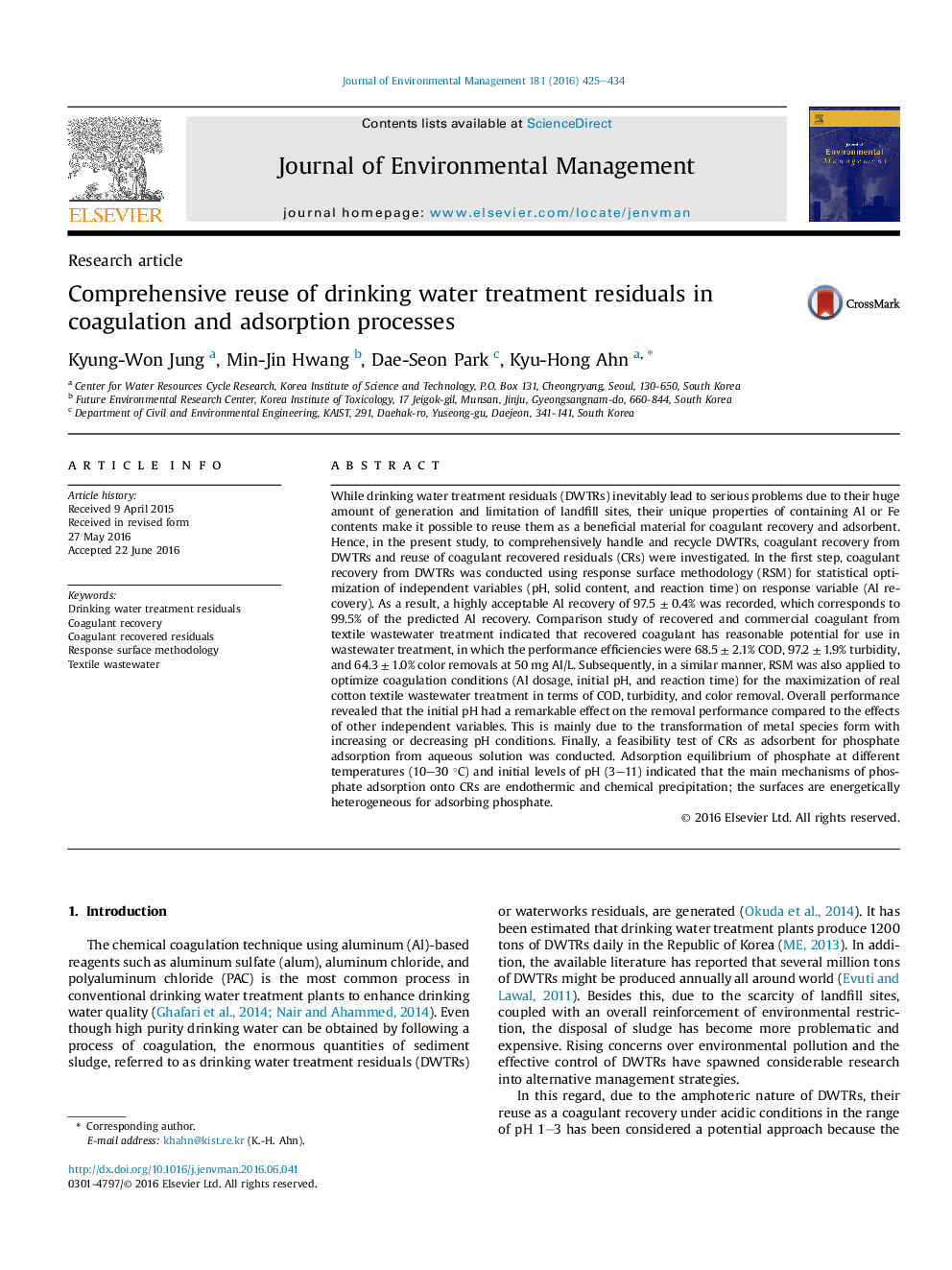| کد مقاله | کد نشریه | سال انتشار | مقاله انگلیسی | نسخه تمام متن |
|---|---|---|---|---|
| 7479700 | 1485231 | 2016 | 10 صفحه PDF | دانلود رایگان |
عنوان انگلیسی مقاله ISI
Comprehensive reuse of drinking water treatment residuals in coagulation and adsorption processes
ترجمه فارسی عنوان
استفاده جامع از آب آشامیدنی در فرایندهای انعقاد و جذب آب
دانلود مقاله + سفارش ترجمه
دانلود مقاله ISI انگلیسی
رایگان برای ایرانیان
کلمات کلیدی
باقی مانده های تصفیه آب آشامیدنی، بازیافت کواگولانت، کوآگولانت باقی مانده است روش سطح پاسخ، فاضلاب نساجی،
موضوعات مرتبط
مهندسی و علوم پایه
مهندسی انرژی
انرژی های تجدید پذیر، توسعه پایدار و محیط زیست
چکیده انگلیسی
While drinking water treatment residuals (DWTRs) inevitably lead to serious problems due to their huge amount of generation and limitation of landfill sites, their unique properties of containing Al or Fe contents make it possible to reuse them as a beneficial material for coagulant recovery and adsorbent. Hence, in the present study, to comprehensively handle and recycle DWTRs, coagulant recovery from DWTRs and reuse of coagulant recovered residuals (CRs) were investigated. In the first step, coagulant recovery from DWTRs was conducted using response surface methodology (RSM) for statistical optimization of independent variables (pH, solid content, and reaction time) on response variable (Al recovery). As a result, a highly acceptable Al recovery of 97.5 ± 0.4% was recorded, which corresponds to 99.5% of the predicted Al recovery. Comparison study of recovered and commercial coagulant from textile wastewater treatment indicated that recovered coagulant has reasonable potential for use in wastewater treatment, in which the performance efficiencies were 68.5 ± 2.1% COD, 97.2 ± 1.9% turbidity, and 64.3 ± 1.0% color removals at 50 mg Al/L. Subsequently, in a similar manner, RSM was also applied to optimize coagulation conditions (Al dosage, initial pH, and reaction time) for the maximization of real cotton textile wastewater treatment in terms of COD, turbidity, and color removal. Overall performance revealed that the initial pH had a remarkable effect on the removal performance compared to the effects of other independent variables. This is mainly due to the transformation of metal species form with increasing or decreasing pH conditions. Finally, a feasibility test of CRs as adsorbent for phosphate adsorption from aqueous solution was conducted. Adsorption equilibrium of phosphate at different temperatures (10-30 °C) and initial levels of pH (3-11) indicated that the main mechanisms of phosphate adsorption onto CRs are endothermic and chemical precipitation; the surfaces are energetically heterogeneous for adsorbing phosphate.
ناشر
Database: Elsevier - ScienceDirect (ساینس دایرکت)
Journal: Journal of Environmental Management - Volume 181, 1 October 2016, Pages 425-434
Journal: Journal of Environmental Management - Volume 181, 1 October 2016, Pages 425-434
نویسندگان
Kyung-Won Jung, Min-Jin Hwang, Dae-Seon Park, Kyu-Hong Ahn,
